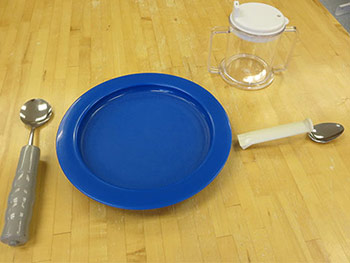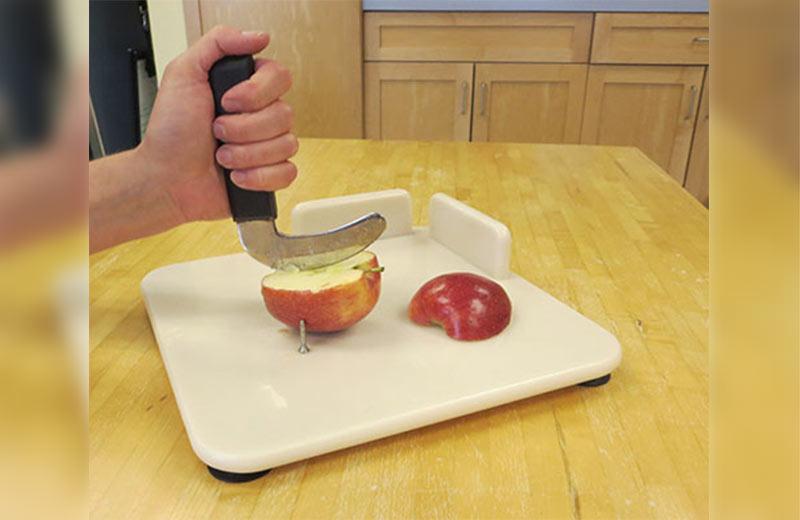This article was co-authored by Rebecca Larson, registered dietitian, and Valerie Pagdin, occupational therapist.
When you have a disability, making healthy meals at home can present additional challenges. Fatigue and difficulty with jars and utensils can create barriers to cooking. But there are ways to make cooking a bit easier so that everyone can enjoy healthy, homemade meals:
- Buy frozen or pre-cut vegetables or fruit so that the preparation is already done.
- Look for items that don't require a can opener. Containers with screw tops (like some fruit and peanut butter) or those that are in pouches (yogurt or tuna) are easier to open.
- Get your milk in a jug. Two litre plastic jugs with handles are easier to hold and pour than a milk carton.
- Buy cheese and bread that are pre-sliced or have the deli or bakery slice them for you.
Making healthy, homemade meals accessible

There are also many tools that can help you maintain your independence in shopping and cooking tasks. Using utensils with larger handles, cutting boards with suction cups to hold them to the countertop, or a mobility device to help you walk or carry items more easily can make a big difference in your ability to buy what you want and cook it the way you like it. An occupational therapist can assess your needs and help you find solutions that work for you in the kitchen. Ask your physician or primary care provider for a referral to an occupational therapist. If transportation is a challenge, many grocery stores and service groups have grocery delivery options. Meals on Wheels is available in many communities and can provide meals if meal preparation is difficult or if you need a break. Food boxes, which contain fresh vegetables delivered on a regular basis, are available in some communities and may be an option to consider. Your local home and community care department can connect you to these programs.
More information
If you need additional suggestions or help to make homemade meals more accessible, contact HealthLink BC Dietitian Services by dialling 8-1-1.
This article first appeared in Healthier You magazine. Find the original story and lots of other information about accessibility in the Fall 2016 issue:














Comments